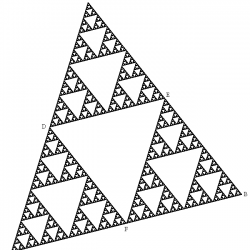 In the sphere of democracy, citizens can express their political opinions in various ways. One of them is by means of a plebiscite, which consists of a consultation of all citizens with the right to vote so that they can pronounce on a matter of general interest. This means that a plebiscite is a participatory democratic instrument. As for the origin of the term, it comes from the Latin plebiscitum, which means law proposed by the people, since it is a scitum or decree promulgated by the commoners, that is, ordinary people.
In the sphere of democracy, citizens can express their political opinions in various ways. One of them is by means of a plebiscite, which consists of a consultation of all citizens with the right to vote so that they can pronounce on a matter of general interest. This means that a plebiscite is a participatory democratic instrument. As for the origin of the term, it comes from the Latin plebiscitum, which means law proposed by the people, since it is a scitum or decree promulgated by the commoners, that is, ordinary people.
Types of plebiscite
In politics we talk about plebiscitary action, which can be carried out by a popular initiative or by the initiative of the rulers of a nation. There are two types of plebiscites: consultative and binding. The first is the one in which citizens cast their vote to make their opinion known, that is, to convey their criteria in relation to a political initiative (in this case the result of the popular consultation does not necessarily have to be applied as it is a simple query).
The binding plebiscite goes further, since it is a popular consultation whose result at the polls must be applied in a mandatory manner
An illustrative historical example of a consultative plebiscite would be the one that took place in Argentina on November 25, 1984 to find out the citizens' criteria on the peace treaty agreed with Chile to solve the Beagle conflict (a dispute over the sovereignty of some islands located in the Beagle Channel).
Generally, the plebiscite is carried out through one question or several and with two possible answers, yes or no. Although in each constitutional text there is a legal definition of what is understood by plebiscite, generally most plebiscite consultations meet the following requirements: that the consultation is a proposal by the president of a nation, that the consultation be approved by a party of the representatives of the people and, finally, that the consultation is approved by the majority of people with the right to vote. Consequently, a plebiscite is carried out as an electoral day, in such a way that citizens indicate a yes or no with respect to the question raised.
Difference between referendum and plebiscite
 Although both concepts are similar, they are not equivalent. A referendum is a call in which the people express their will through a vote and in relation to an issue that affects citizens as a whole (for example, in Spain on December 6, 1978, the Spanish expressed in a referendum their majority support for the Constitution agreed by the representatives of the people).
Although both concepts are similar, they are not equivalent. A referendum is a call in which the people express their will through a vote and in relation to an issue that affects citizens as a whole (for example, in Spain on December 6, 1978, the Spanish expressed in a referendum their majority support for the Constitution agreed by the representatives of the people).
Therefore, the referendum is a participation mechanism in which a proposal is ratified or not. On the other hand, in the plebiscite the people or the rulers create an initiative (the proposal of a legal norm) that will later be put to a vote.
Photos: iStock - Martin Cvetković / George Clerk









